NEW YORK––Traveling through the Metropolitan Transportation Authority network, attentive subway riders will enjoy a top-rate museum experience comprised of myriad works by artists reimagined in mosaic, terra cotta, bronze, glass and more. One such stop––New York City’s 28th Street Subway station––features the botanical imagery of Brooklyn-based artist Nancy Blum.
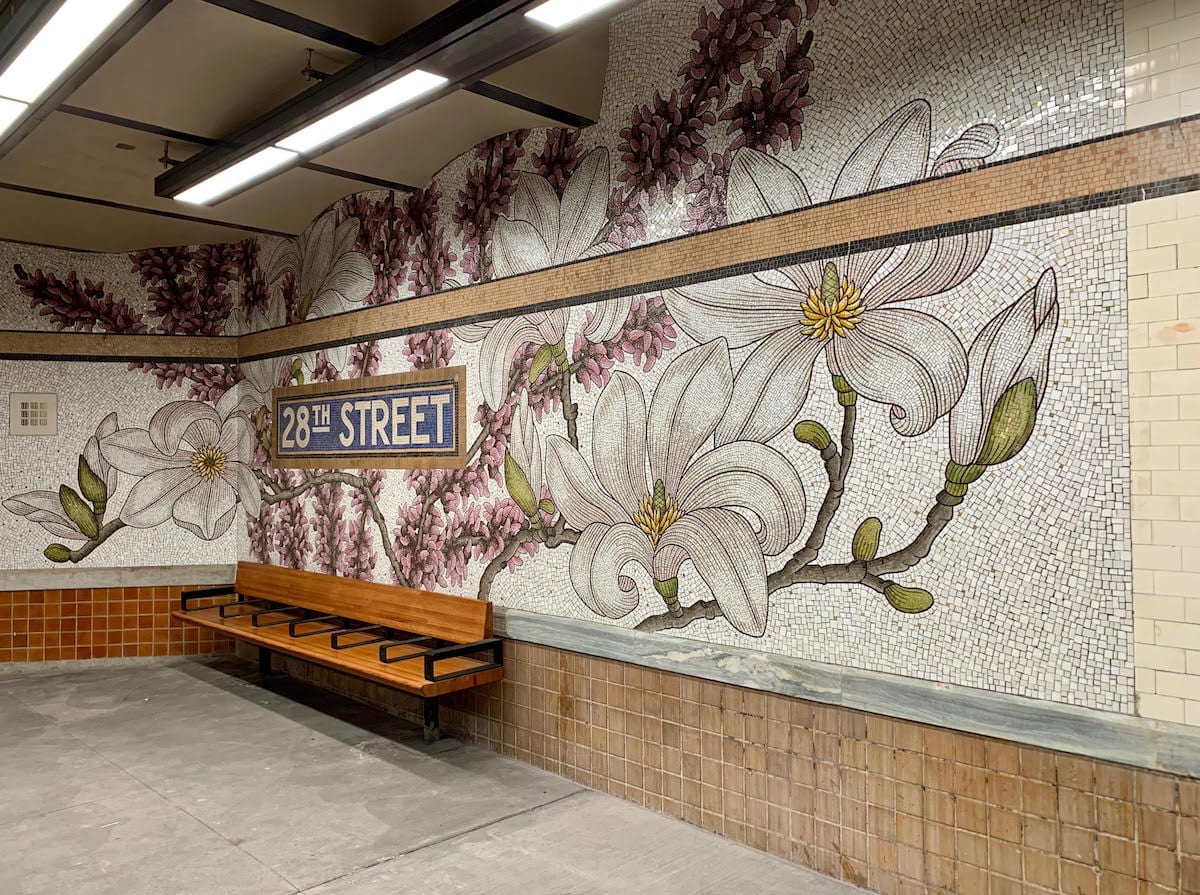
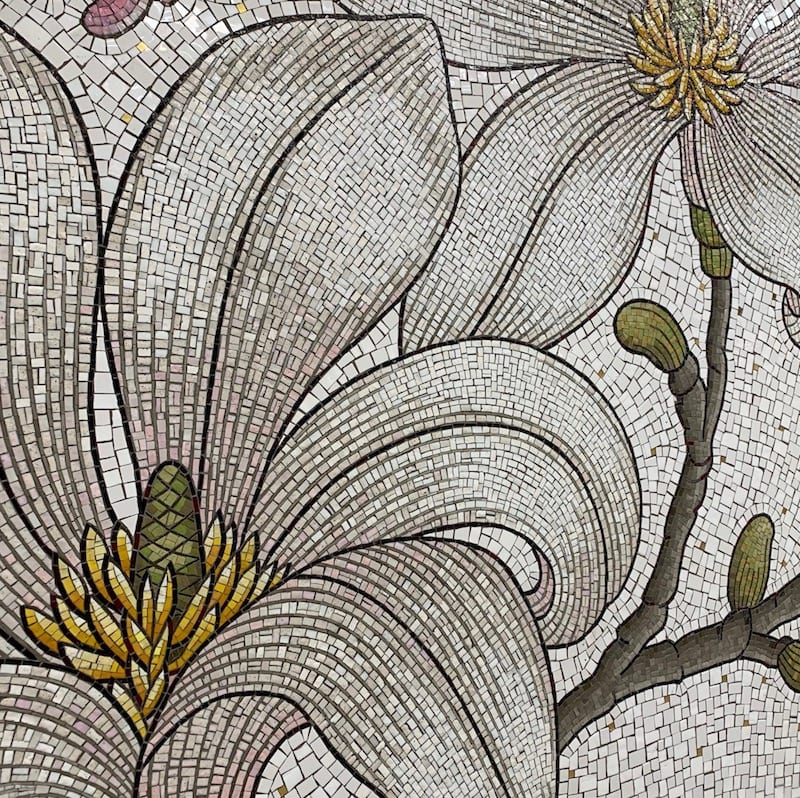
More than 300 artists––though most are not experts in mosaics––have had their works interpreted in tile with a little help, The New York Times writes.
[The] artists have received a big assist from Stephen Miotto, a master craftsman in mosaics who has a studio in Carmel, N.Y., and the Friuli region of Italy. Mr. Miotto works with artists to recreate their visions in the mosaic tiles; once he and his team of skilled artisans are finished with the assembly, which can take months or more than a year, they press the mosaic into cement-covered substrate in the subway station.The New York Times
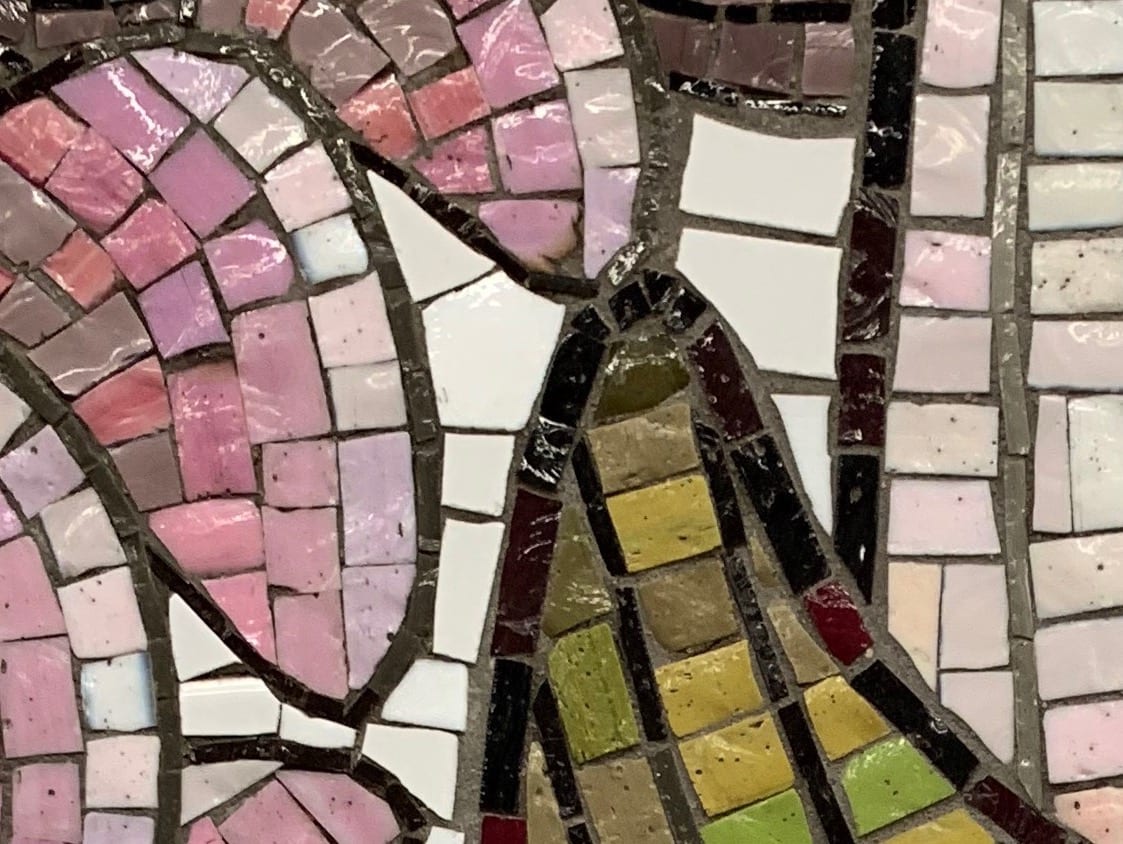
The New York subway system has incorporated mosaics since its opening in 1904, a tradition that continues today––over a century later.
The founders of the New York City subway believed that every design element in the system should show respect for our customers and enhance the experience of travel. Language was added to contracts that required the highest quality materials and craftsmanship. This led to the extensive use of ceramic tile, terra cotta and mosaics as decorative elements. As the century-old transportation network is restored and renewed, these decorative elements of the past are preserved and protected as contemporary art and design are introduced.
MTA Art & Design
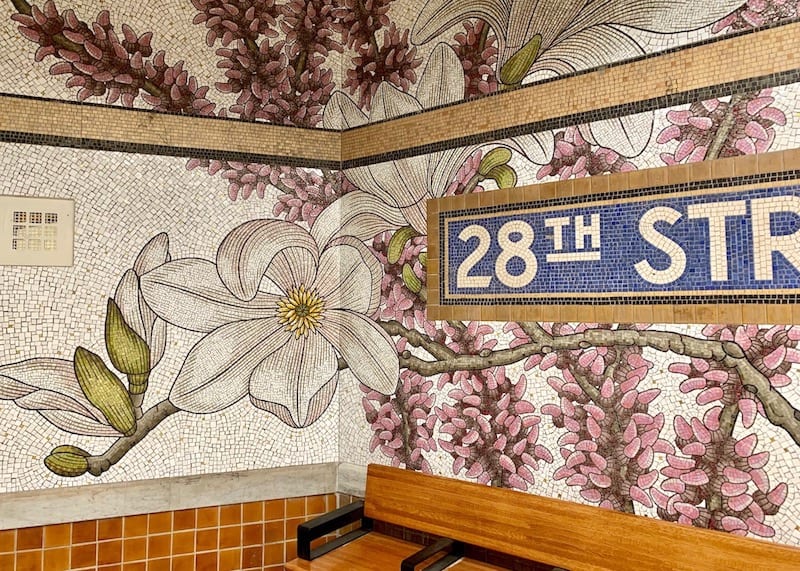
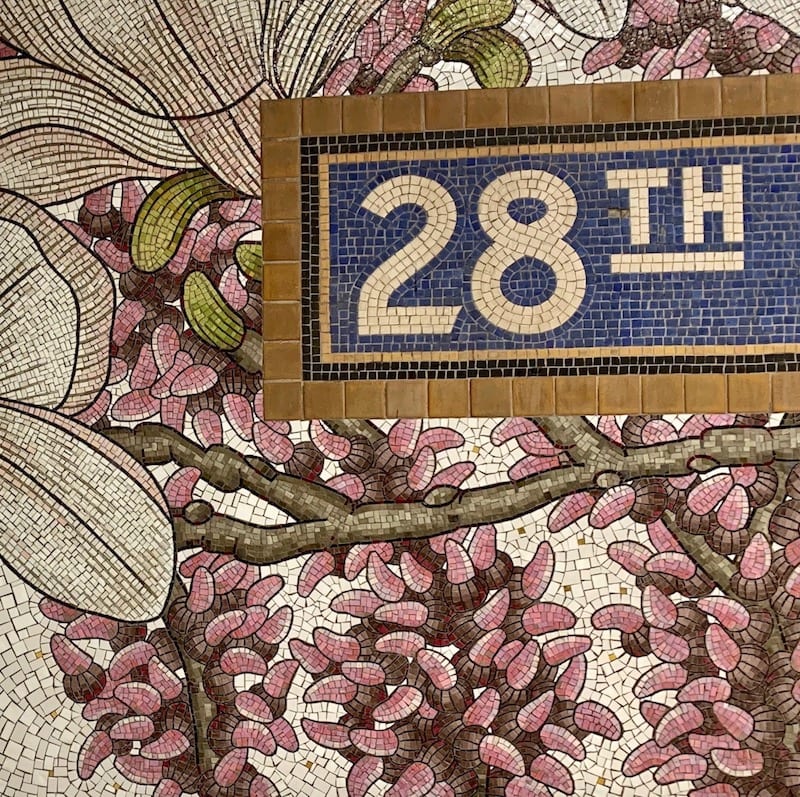
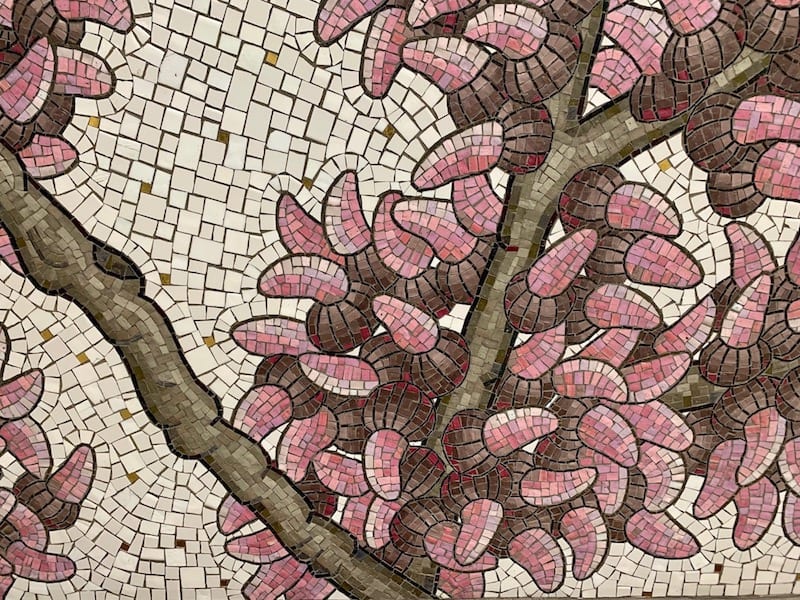
The MTA’s Arts and Design program now oversees the selection and installation of mosaics after a massive reinvestment and revitalization effort during the 1980’s. According to the MTA, the extensive subway system is now home to one of the largest and most diverse collections of site-specific public art in the world.
The MTA’s leadership determined that original, engaging and integrated artworks should be part of the rehabilitation and construction process and civic leaders and arts professionals agreed, lending their prestige and support to various committees that developed the policies and procedures to include art as an integral part of the rebuilding effort.
MTA Art & Design
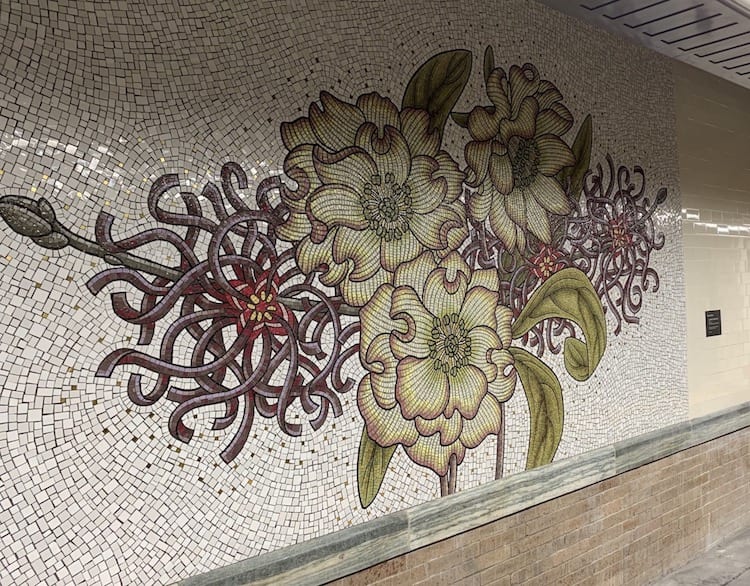
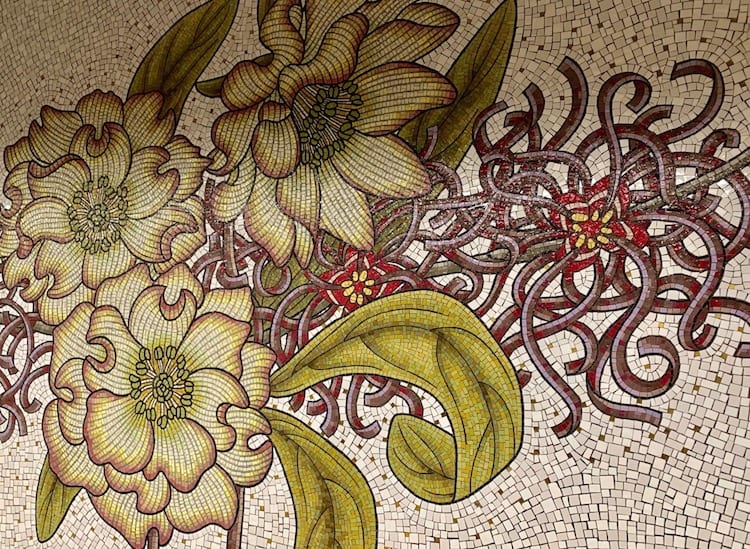
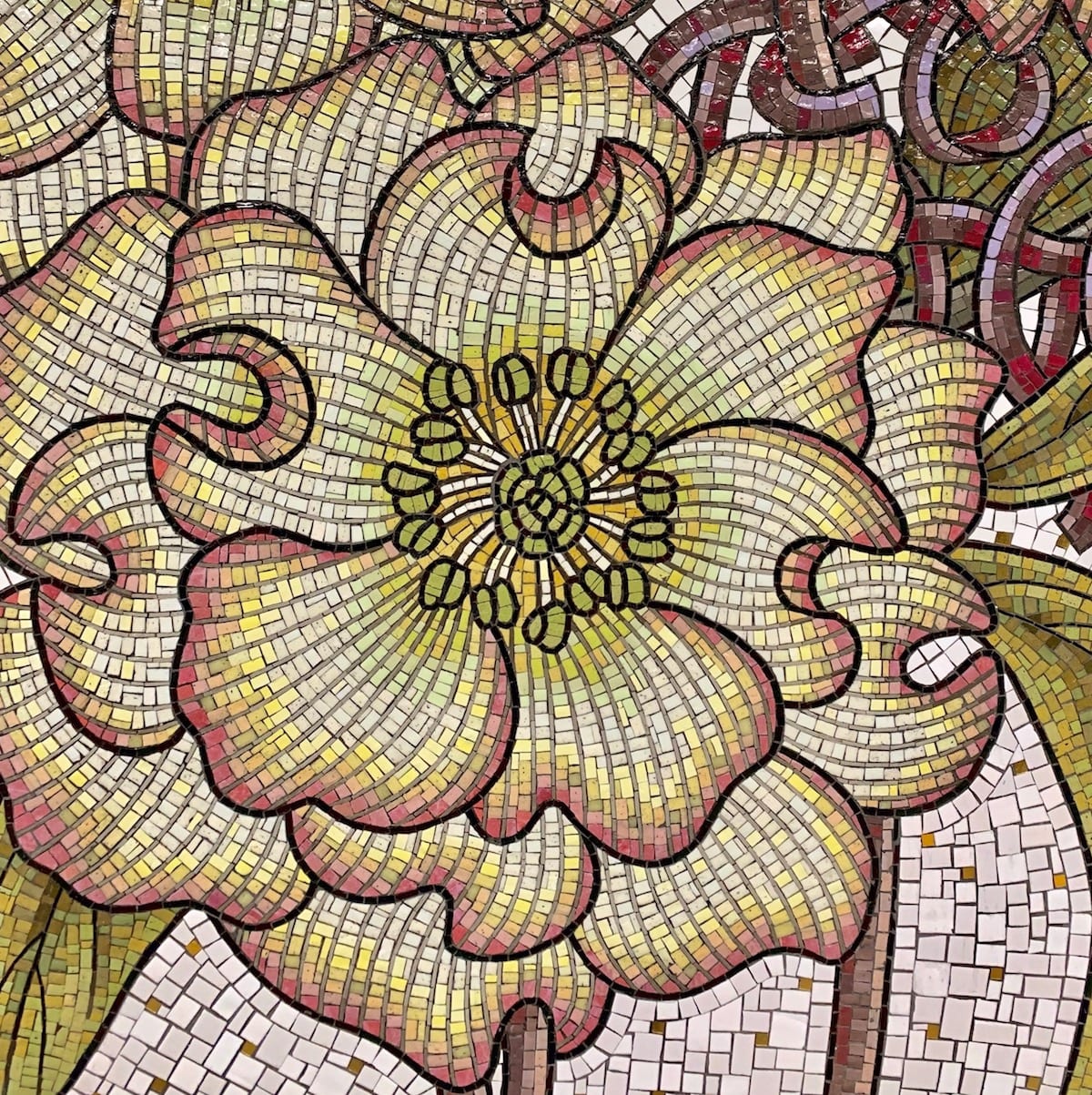
The 28th Street station isn’t Blum’s first subway installation. In 2007, her site-specific mosaic work Floating Auriculas was installed at the Dobbs Ferry station.
This piece spans a large retaining wall that runs parallel to the Hudson River. Commissioned by the Metro Transit Authority, Arts For Transit, the work is located at the Dobbs Ferry train station along the New York Hudson Line. Installed are seven full and partial ‘auricula flowers’ at 8 feet in diameter. They are made out of a combination of Italian glass and marble tile.
Nancy Blum
Blum is, in fact, no stranger to public art with works installed across the country: her flora-inspired Enliven (2012) sculptures in Philadelphia, Dogwood Basins in Charlotte, North Carolina, and her monumental Revival (2015) enameled glass windows at San Francisco General Hospital, just to name a few.
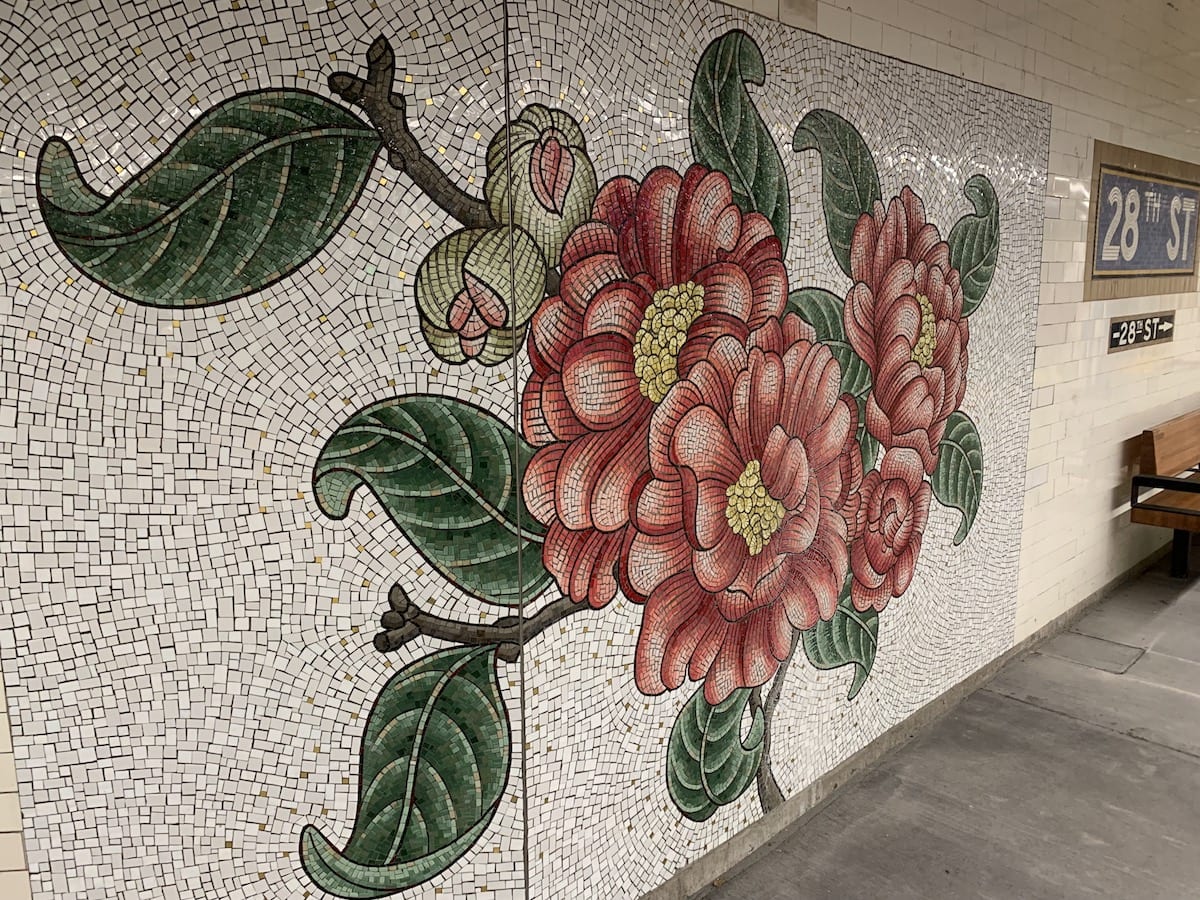
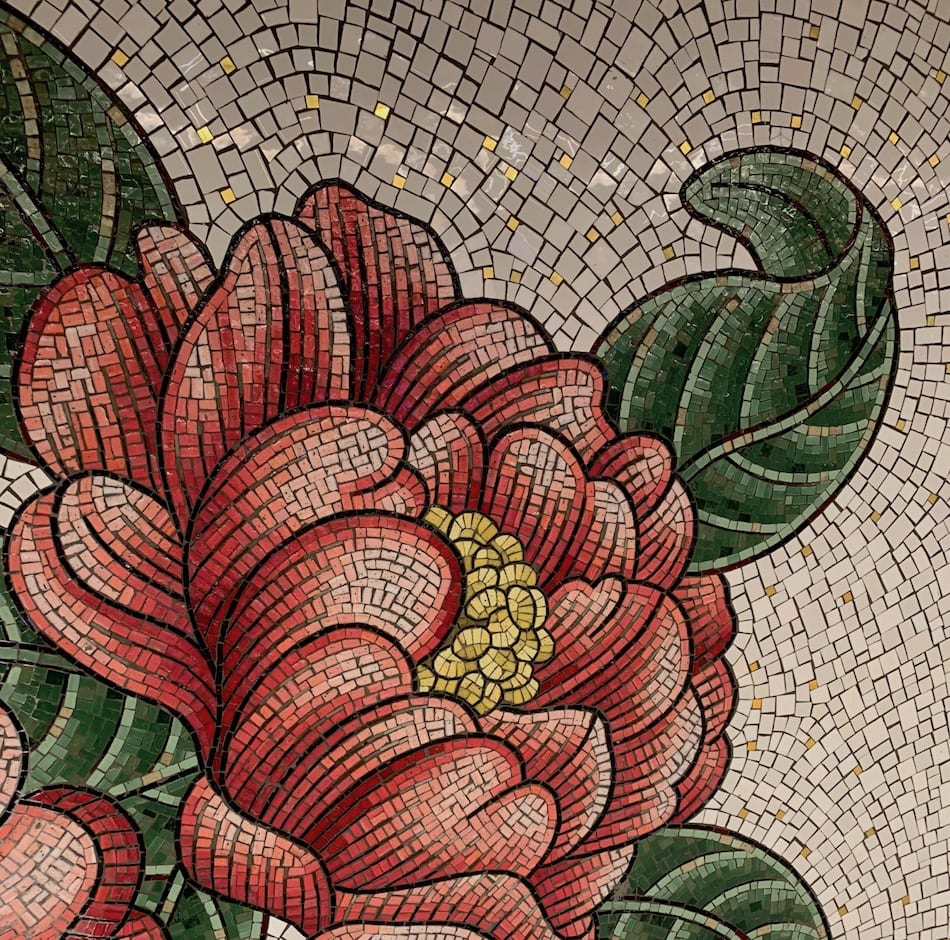
MTA Arts & Design serves the over 8.7 million people who ride MTA subways and commuter trains daily and strives to create meaningful connections among sites, neighborhoods, and people.
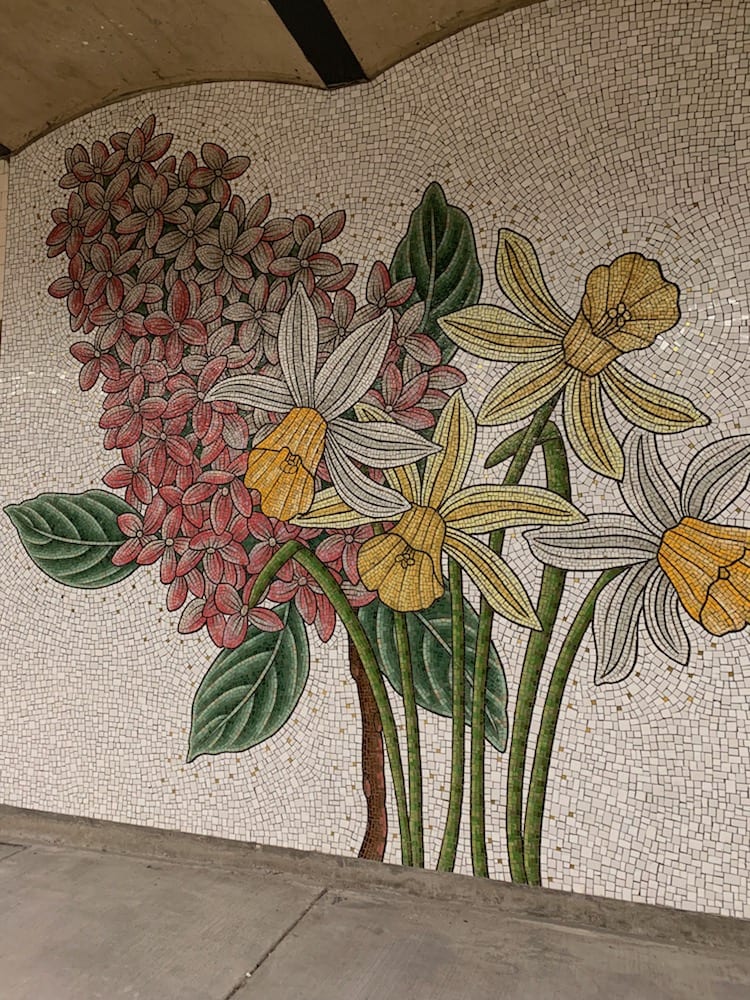

About the artist: Blum received her MFA from the Cranbrook Academy of Art and has since become a widely sought-after visiting artist, critic, and lecturer at universities nationwide. Residencies have taken her to Bowdoin College, Virginia Commonwealth University School of the Arts, Alfred University, Ohio State University, Kansas City Art Institute, Atlantic Center for the Arts, Archie Bray Foundation, Hunter College, University of Michigan School of Art, and the Banff Centre for the Arts, among many other institutions. Her work has also been recognized through fellowships from the Pollock‐Krasner Foundation, Peter S. Reed Foundation, Mid‐Atlantic Arts Foundation, and New York’s Lower East Side Printshop.
Love or loathe this example of mosaic tile from the world of contemporary ceramic art and contemporary ceramics? Share your thoughts in the comments section below.
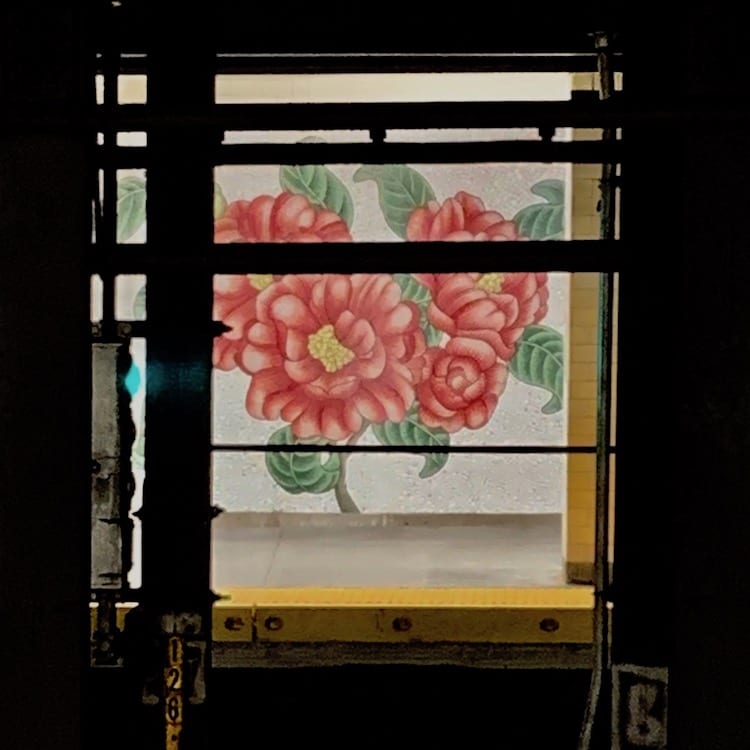
If you would like to learn more about how Blum’s beautiful blossoms were translated by artisans into the mosaics you see here, take a look at Carol Bowen’s video here: https://www.youtube.com/watch?v=PVU3DNco-3s&t=73s
Astounding work. These creations leave me breathless, and make me want to visit the city just to enjoy the subway stations.
LOVE THE MOSAIC WORK, BUT IT IS NANCY’S CONCEPT AND DRAWING THAT MAKE THIS SUBWAY STOP SO EXTRAORDINARY. THE SCALE OF THE FLORAL WORK GRABS YOUR ATTENTION.